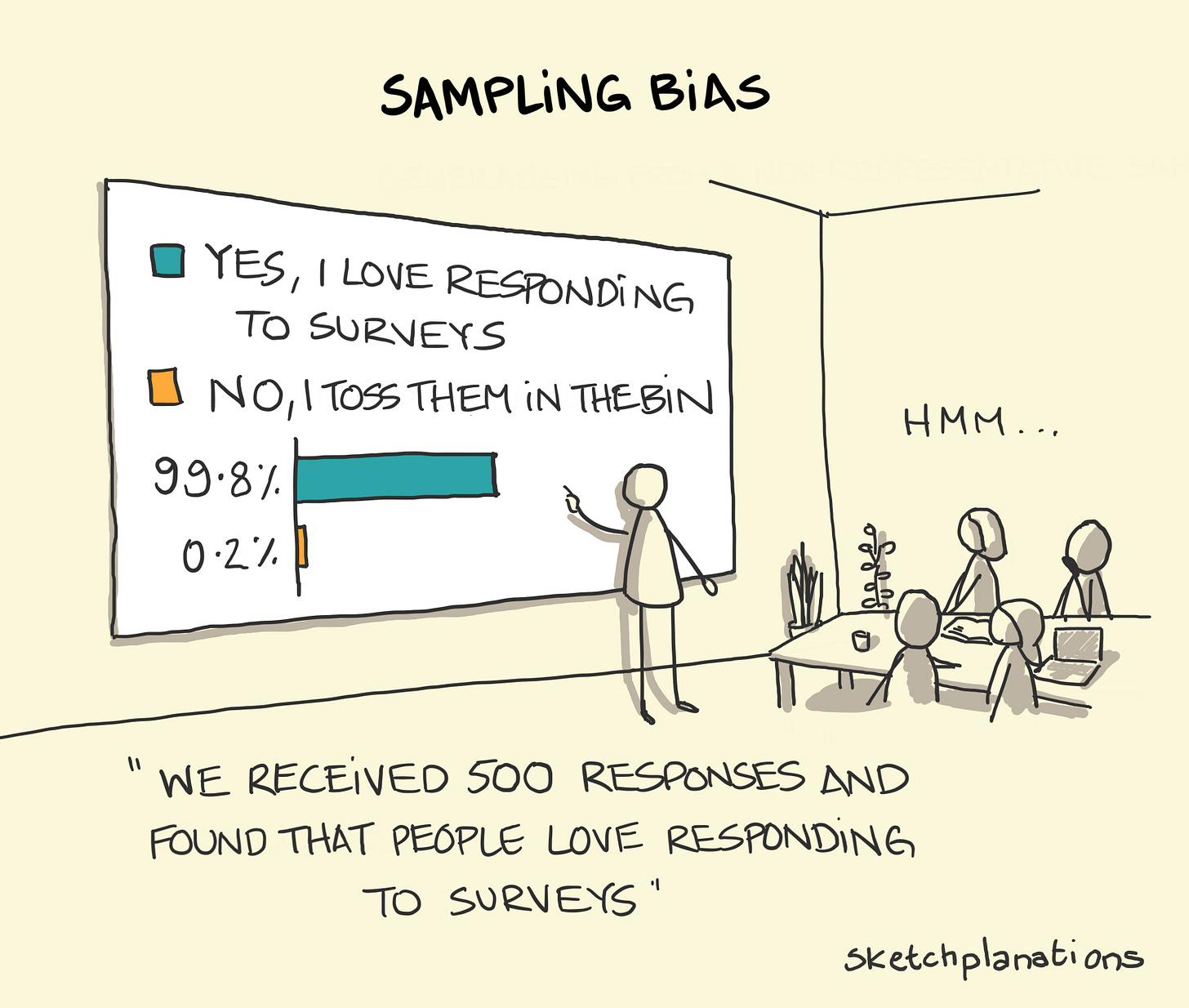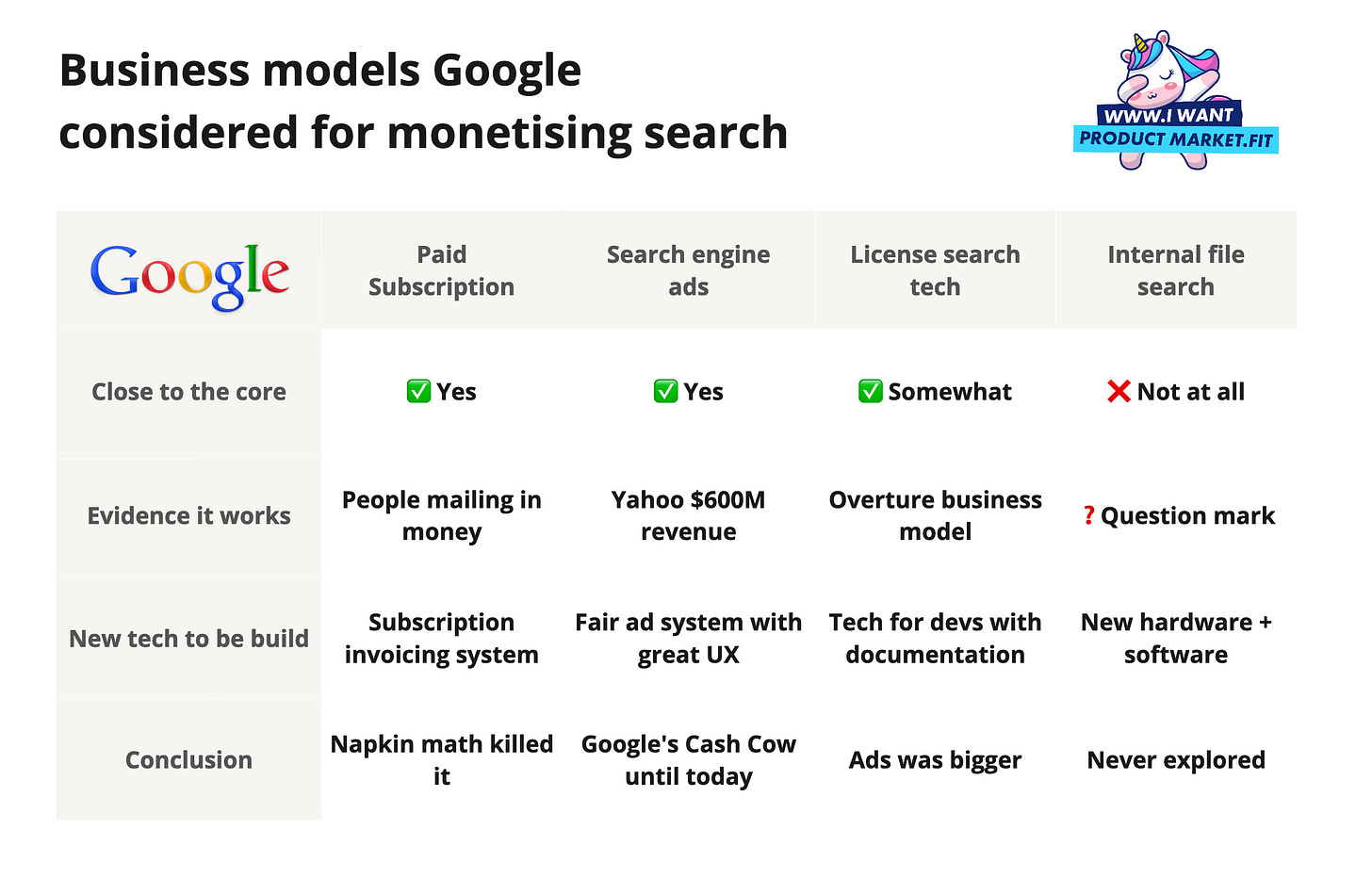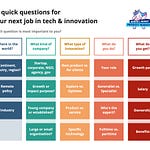💬 Quote of the day
“Slow and steady wins the race. And if it doesn’t, you might want to reconsider participating in that race”
🔗 My three favourite links
The best tip for building arguments from the makers of South Park
Twenty book tips for founders
🏞️ Picture of the day
🥳 Welcome to subscriber 1.111 📈🦄
The magical number 1.111 is reached. Thank you all for reading along!
🔎 How Google struggled to monetize its search monopoly
Almost 60% of Google’s $250B revenue comes from ads in Google Search.
Did you know that the ad-based business model was not always a no-brainer for Google?
In this article, I will show which four business models Google considered before fully going in on ads.
You will learn that you don’t decide which business model works best
Market dominance within 4 years
Let’s go back to the era when Google is barely a player in the search market.
It’s April 1998.
Search is new and exciting.
People navigate now-dead search engines such as Altavista and Lycos in now-dead browsers such as Netscape and Internet Explorer.
In 1998 Google Search is launched. It grows quickly.
Google was/is superior because it was extremely clean, providing highly relevant search results and was very easy to use.
Around the end of 2002, Google takes the market leader position.
Four years since launch.

How to make money without compromising user experience?
Google attracted investors early on.
In 1998, they got some angel investments. Bechtolstein, co-founder of Sun Microsystems, invested $100K and knew from the start making money is important.
"The key question with any internet start-up is: 'How are you going to make money?'" Bechtolstein said. "I never get sucked into ideas with no economic merit.” - Source
In 1999, Google received $25M in funding from Sequoia Capital & Kleiner Perkins.
One condition with this raise, due to the lack of a business plan: hire an experienced business executive to make this business profitable.
That’s how Eric Schmidt entered Google.
Need help with your business model?
Google considered these four business models
Selling a hardware product that would let companies search their own internal files
Search ads (obviously)
Paid subscription for consumers
Licensing deals with other companies
Hardware product
Not all options were considered rigorously. I could find mentions but no detailed accounts of the hardware product in the historical accounts on monetizing Google Search.
Makes sense, developing entire new software and hardware would have been far from the core.
Licensing deals
Everyone at Google knew that their market dominance was due to excellent search results in a non-distracting experience. Therefore, Larry & Sergey were against ads, so much they published a paper on it.
Thus, they started by licensing their software, initially rather unsuccessfully. Only Netscape and Red Hat said yes. Why?
Google didn’t have a sales force, it was a tech company. Meanwhile, there was competition with salesforces. Search provider Inktomi served to big tech companies such as Microsoft and Amazon.
But, after a rough start, licensing deals went up.
In 2000, Yahoo made a deal with Google to do their search (until 2004). AOL followed in 2002, which lasted until 2015. A $100M deal with Ask Jeeves followed.
Sergey Brin saw these deals as a confirmation of Google’s business strategy.
Paid subscription service of $20 per year
During my research for this article, I was surprised to find a subscription model among the options.
Are the end-users willing to pay for Google Search? Well, Google considered this and they had some evidence for this:
Every now and then, we would get fan mail that would have like a check or cash in it. People would be like, “Your search engine is so good and you’re not making any money, and we just wanted to pay you.” - Marissa Mayer on Freakonomics Radio.
What if we charge $20 per year per user, they reasoned for a brief moment.
Quickly, they asked, what if we earn 1ct per search via ads?
With some napkin math, Marissa tells us that ads could outearn the subscription model by a factor of five. “It wasn’t a hard decision”, she reflects.
Search Ads
Monetising search with ads worked for AskJeeves, Yahoo and Overture. Market leader Yahoo made almost $600M in profit in 1999, with the vast majority coming from advertising.
With more arrows pointing towards ads, Google considered working with or acquiring Overture, which provided search ads to AOL at the time.

In the end, they knew how they could build it better than Overture:
Free results are separate from paid results.
Only serve relevant ads.
Ads that don’t get clicked on disappear.
Google Launched AdWords on October 23, 2000.
The data shows the most lucrative model
At this point, Google ran 2 business models at the same time: Licensing and ads.
Licensing deals already got some big tickets in. All eyes were on ads.
Google Ads raked in $70 Million in the first year. It wasn’t perfect. But they continuously made improvements:
First advertisers were manually contracted, later they added self-signup.
Experiments with the layout
Experiments with the bidding system - at first a company could buy all three spots of a single keyword. Now they can only buy 1.
Ads for the win
Gas oogle Ads soon started to outearn the licensing deals, as the Sequoia VC Michael Moritz remembers:
"And it didn't take long for us to all understand that it made sense to go where the money was being spent. And it was being spent in the advertising business much more readily than in the licensing business.”
"Revenue always begins in dribbles. It is like rain showers. You always get a few drops of rain before the downpour.” - Michael Moritz
Stay close to your core
Are you a founder with an elaborate business model?
A funky innovative business model is not better, often it’s worse. Some tips:
Charging close to the value generated often works best
Keep it simple, every extra node increases the complexity and therefore the chance of failure
Having a buyer that is different from the user can work, however, it forces you to create additional feedback loops to make sure you are delivering value to both
You are not married to your business model or revenue model. Remember, what got you here, doesn’t necessarily get you there
How was this one?
For every vote, I will save one polar bear 🐻❄️

















Share this post